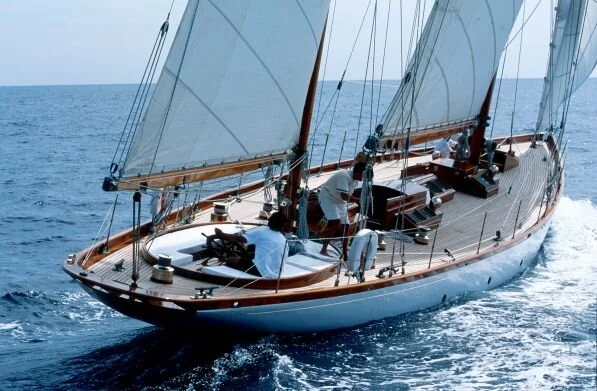ERROL FLYNN- HOBART TO HOLLYWOOD
Errol Flynn and Lili Damita onboard SIROCCO
Errol Flynn was a Seasoned sailor before becoming a Hollywood film star. Whether on-screen as Captain Blood or off-screen as master and commander of his 74’ ALDEN ketch SIROCCO, there was always adventure with yachts.
The truth of any story about Errol is always loose but he cared naught. What we know for sure is from the age of 21 until his early death at 50 he always owned a classic yacht.
The Flynn family lived in Battery Point, home to Hobart shipwrights. Errol’s father Theodore Thompson Flynn, was a marine biologist and Professor of Biology at the University of Tasmania from 1911 to 1930. He then took up the Chair of Zoology at Queens University Belfast, Northern Ireland. Errol, born in 1909 was sent to Hutchins, a very proper Anglican boy’s school and later the Quaker co-ed Friends School. When the family moved to Sydney in 1925, Errol went to Sydney Grammar but was soon expelled for theft. He was happy to be done with formal education and showed little aptitude for work.
At 18 Errol was drifting around Sydney parties after being “dismissed” from a Sydney shipping company for taking petty cash. His adventurous spirit somehow got him to New Guinea where he began training as a district official but moved on in quick succession becoming a plantation overseer and sometime partner in a schooner, running a charter business without success. He returned to Sydney in 1930 at the height of the Depression.
The First SIROCCO
With not many options and hoping to get back to the islands, Errol purchased the cutter SIROCCO from the boatbuilder Lars Halvorsen in Sydney. After sorting provisions he and three mates set out on a 2000Nm seven month trip up the east coast of Australia to New Guinea. They made it but claimed to have been ship-wrecked on a reef on arrival. Errol tried work again as manager of a tobacco plantation at Laloki while writing columns on New Guinea life for Sydney magazines like the Bulletin. His passion for journalism was lifelong and offered him further adventure. When SIROCCO was about half-way up the coast, she restocked at Port Alma at the southern end of the Great Barrier Reef. The local newspaper, the Rockhampton Morning Bulletin sent a reporter to meet the boat. Their article from June 1930 “The Sirocco Calls-In” shows Flynn already spinning tall stories of high-seas adventure.
SIROCCO crew 1930
Cosmopolitan Magazine 1936
THE SIROCCO CALLS IN
Long, narrow-waisted and black-hulled with towering stick above the wharf, but bearing little signs of the buffeting she has received on her voyage, the Sirocco late of Royal Sydney Yacht Club is nine days up from Sydney and bound for New Guinea and the beche-de-mer (sea cucumber) and trochus shell. Fifty years old, but as staunch as the day she slipped into the water for the first time at Circular Quay, the Sirocco will know a different atmosphere now from the one she has been accustomed to so long.
In the cabin, where the captain lies with malaria, her youthful crew sit round in shorts, and where two business-like rifles are fast in clips above the bunks, one might have thought that the Sirocco had reached to sea to seek their fortunes. First there is Captain Errol Flynn, late Cambridge undergrad, now planter on a lonely island 40 miles from mysterious Madang, the island of the “White Kanakas,” where he dispenses high and low justice to his 40 odd natives and bears his share of the white man’s burden.
“This is our navigator”, said Captain Flynn from under his blankets when the Bulletin man stepped aboard. “You’ll have to excuse me, just a touch of malaria but meet the crew.” Mr. T. Adams, a young Englishman is the navigator. Close clipped moustache, accent and physique brand him unmistakably as product of university. Mr. C. Burt, another member of the crew is also an Englishman and Australia is represented by Mr. Rex Long-Innes, son of Judge Long-Innes, who is going forth with the others to seek fortune in the South Seas.
When they talked it was mostly about their argosy. “She’s old but she’s good” says the skipper with pride in his voice, and he told the Bulletin man how she logged 14 for three hours in a howling south-easter that piled them up in Coffs Harbour with a foot of water in the cabin. “Forty-four feet over all with a Swedish oil engine, we’re not worrying about the weather”. Already they’ve had adventure on the trip. They made their names and took their baptisms when crossing the bars in northern New South Wales in howling gales. They went ashore in the Great Sandy Straits and had their share of rough weather, but builders built well 50 years ago, and lean-waisted as she is, the Sirocco has ten tons of lead under her keel.
By 1932 Errol was back in Sydney again, leaving unpaid debts in New Guinea. His luck turned when cast as Fletcher Christian in Charles Chauvel’s early Australian movie “The Wake of the Bounty” released in 1933. The coincidence appealed to Flynn, who thought he was perfect for the role after crossing the same seas as the BOUNTY in his SIROCCO. After the mutiny, Captain Bligh piloted HM Bounty’s launch 3,500Nm along the northern waters of the Great Barrier Reef, Cape York and Thursday Island. Captain Flynn’s SIROCCO sailed up the east coast of Australia continuing north to New Guinea while Bligh went west through the Arafura Sea to Kupang in Timor, a trading port controlled by the Dutch East Indies Company (now Indonesia). Clark Gable, Marlon Brando and Mel Gibson reprised the role of FC in remakes through the 20C.
Film Poster 1933
Cat o’ Nine Tails scene from “In the Wake of the Bounty”
Self-assured of his destiny and excited by the prospect of working in film, Flynn set out for England in 1933 to pursue an acting career picking up regional repertory and minor film roles for Warner Bros English studios. These performances were soon noticed and he was recommended for a contract in Hollywood. At 25 Flynn sailed for Los Angeles meeting his first wife Lili Damita, a French movie star on the ship. Lili knew the studio ropes and was Errol’s entrée to Hollywood.
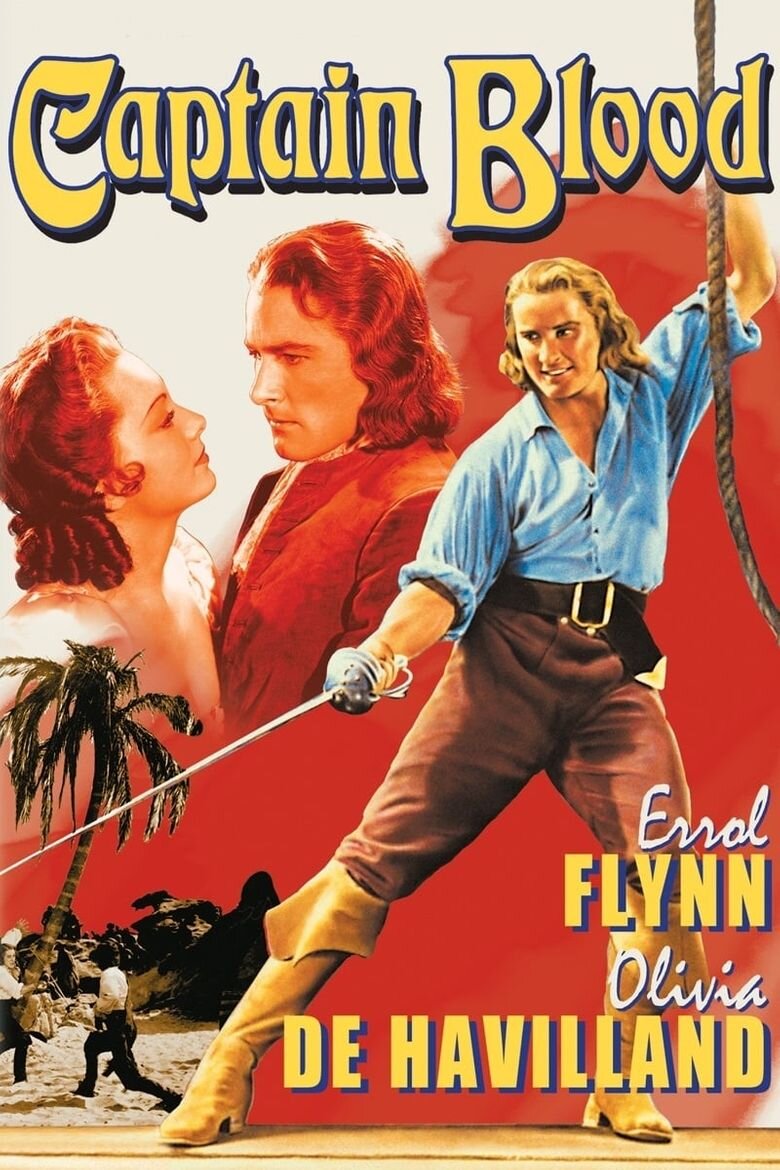
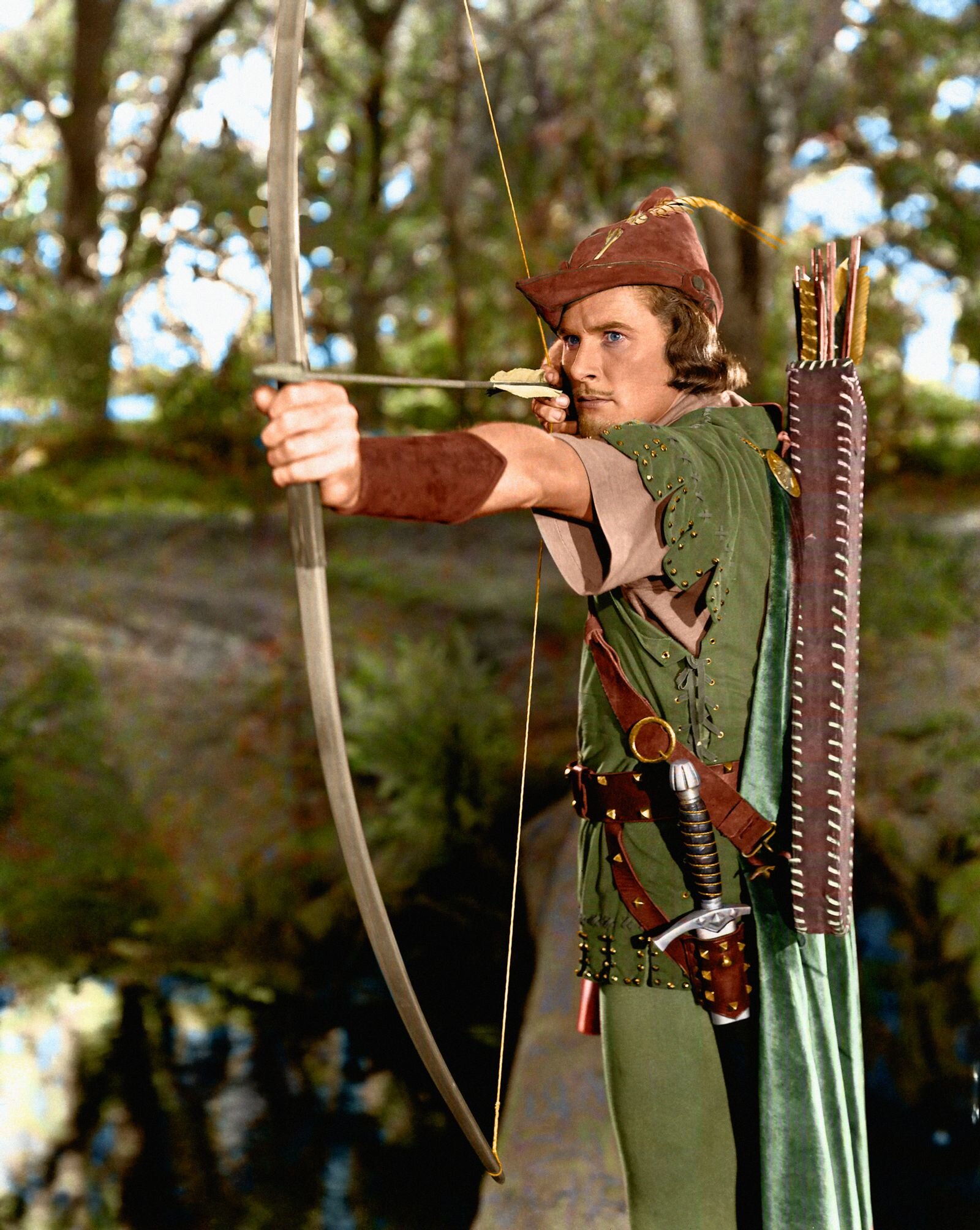
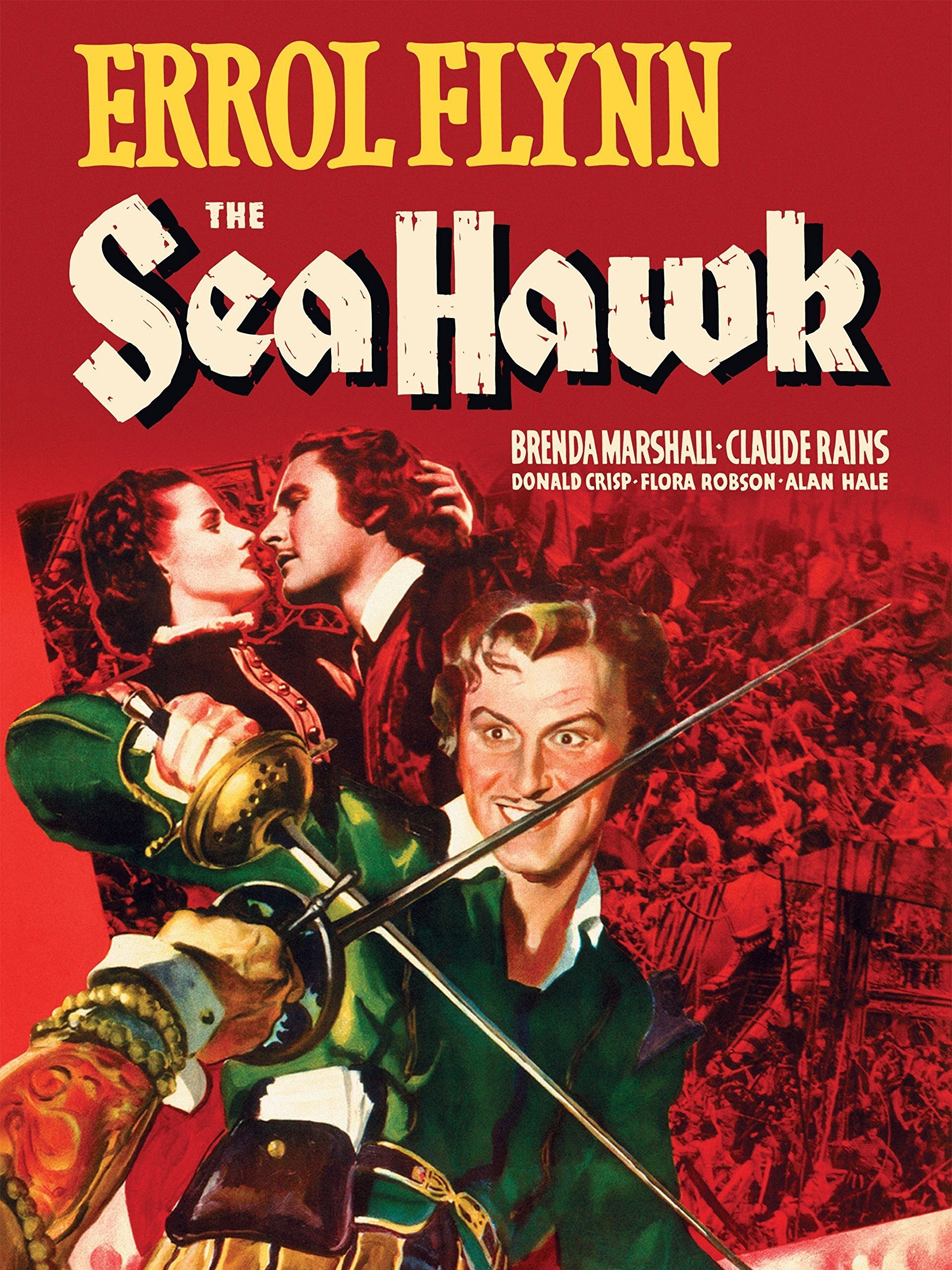
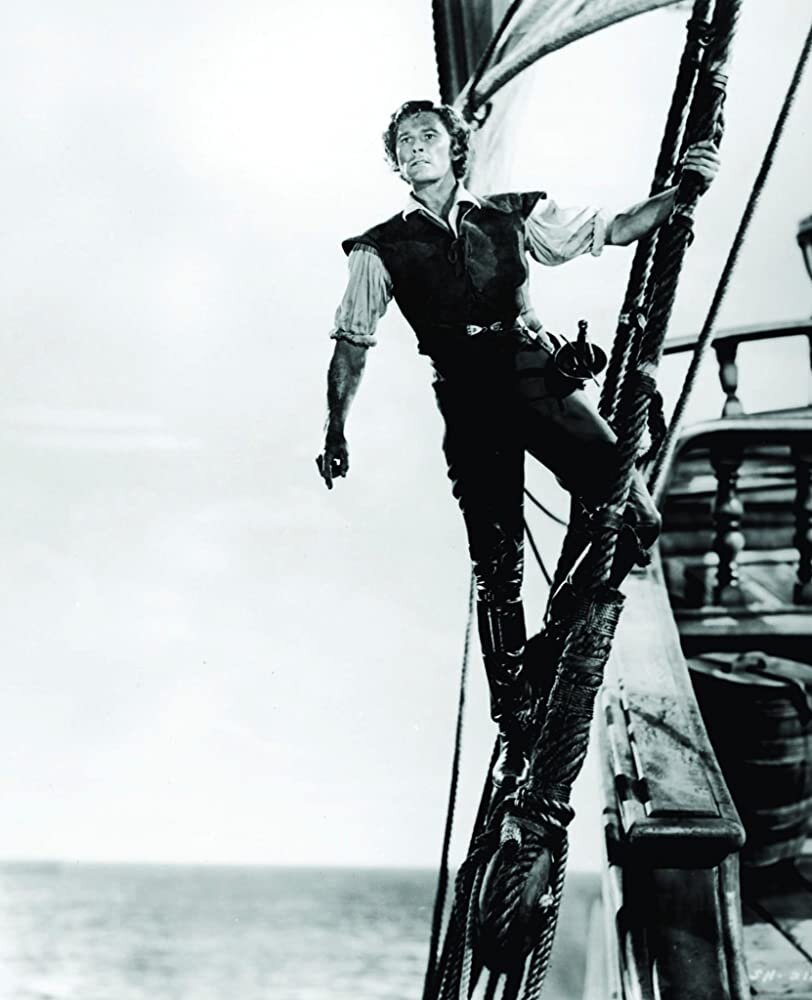
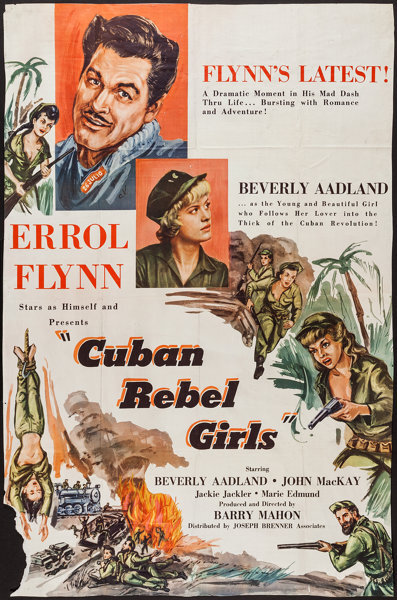
HOLLYWOOD MOVIES
“Captain Blood” with Olivia de Havilland made Errol a star in 1935. A simple plot where Blood is convicted of treason against King James and sold into Caribbean slavery. He escapes to a life of piracy on the high-seas but remembers his sweet slave master, de Havilland. After finishing the film, Errol’s penchant for journalism took him to Spain at the start of the Civil War as a correspondent for Hearst Newspapers. Like all things Flynn, he only stayed a few weeks posting “What happened in Spain”. Not quite the great papa Hemingway, who stayed in Spain for a year in 1937 as a war correspondent and later wrote “For Whom the Bell Tolls”. Errol was soon back in Hollywood and cast in “Charge of the Light Brigade”, again with Olivia de Havilland and the very English David Niven. Music was by Max Steiner, the composer of Casablanca. The leading man’s fee gave Errol the money to buy the Alden ketch he named SIROCCO and time to write “Beam Ends”.
Warner Bros Studio publicists (and Errol) went to work embellishing the past. His personal history and Hollywood profile with women, yachts and adventure was successfully re-shaped. They had him swash-buckling through school, Sydney society and sailing the South Seas. Errol’s expulsion from school became a sexual “encounter” with the laundry mistress while in New Guinea he was working as a British secret agent trading in diamonds before striking gold, even hinting he was a descendant of Mr Fletcher Christian.
Australia with its Flynn & Fauna was an exotic land worth promoting. As a showpiece, Jack Warner asked the Tasmanian Government to ship some Tasmanian Devils to Los Angeles as gifts for his contracted sister starlets Priscilla and Rosemary Lane. The young actresses quickly donated the unmanageable beasts to the LA Zoo where, within a week, they escaped by gnawing through the wire cage. Errol loved that story and was very happy to be nicknamed “The Tasmanian Devil” and later become the inspiration for “Taz Mania”, the 1954 Warner Bros. Looney Tunes cartoon character. Errol laid claim for a life without restraint; “I’m going to front the essentials of life to see if I can learn what it has to teach and above all, not to discover that when I come to die, that I haven’t lived”.
BEAM ENDS
Beam Ends Cover Illustration
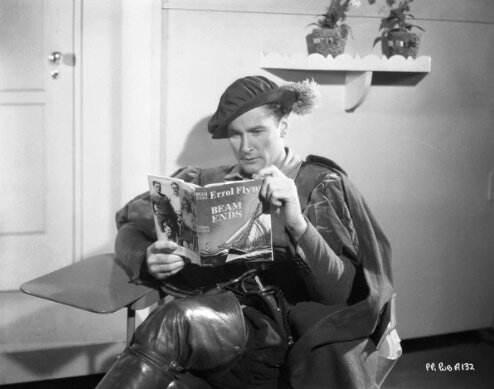
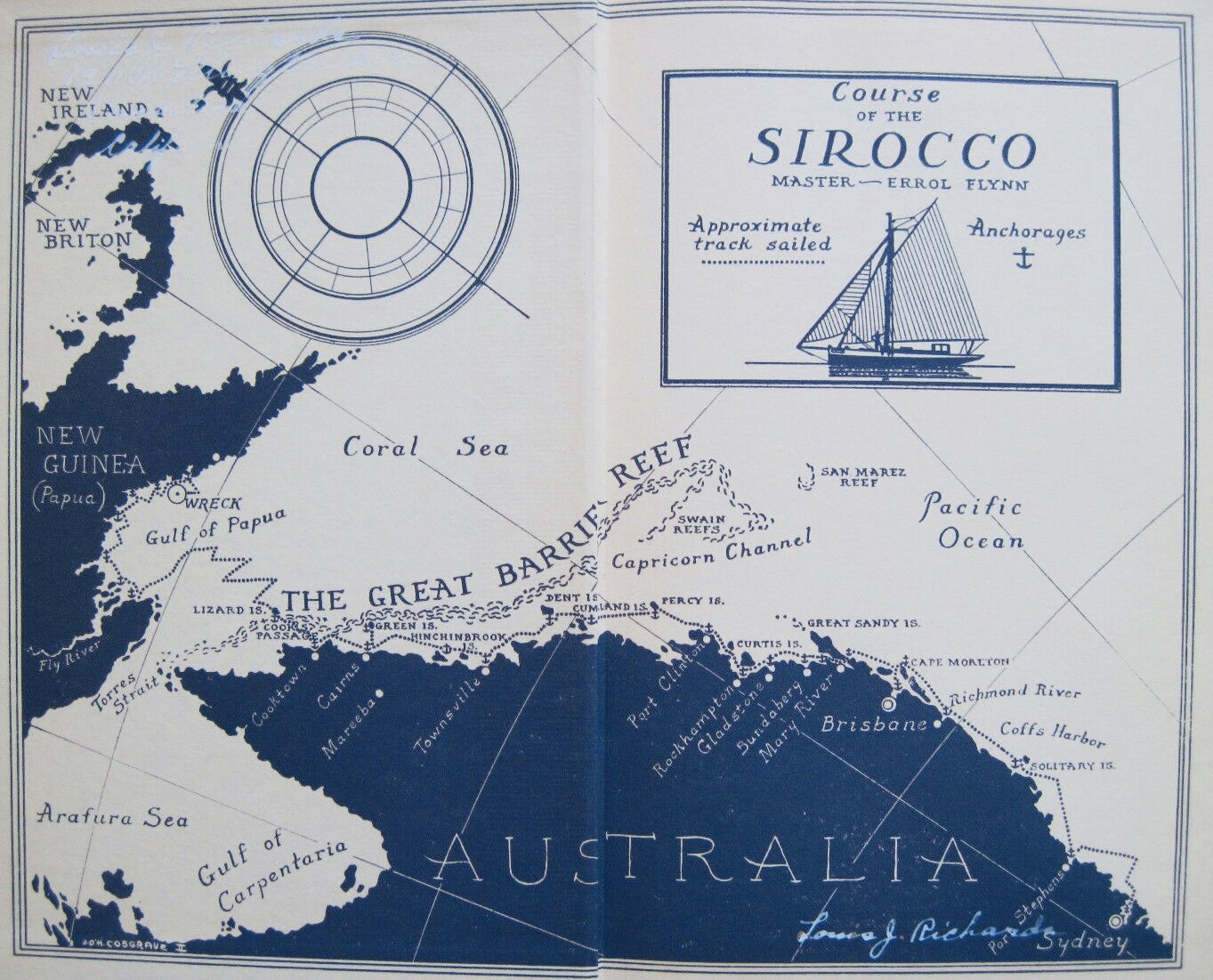
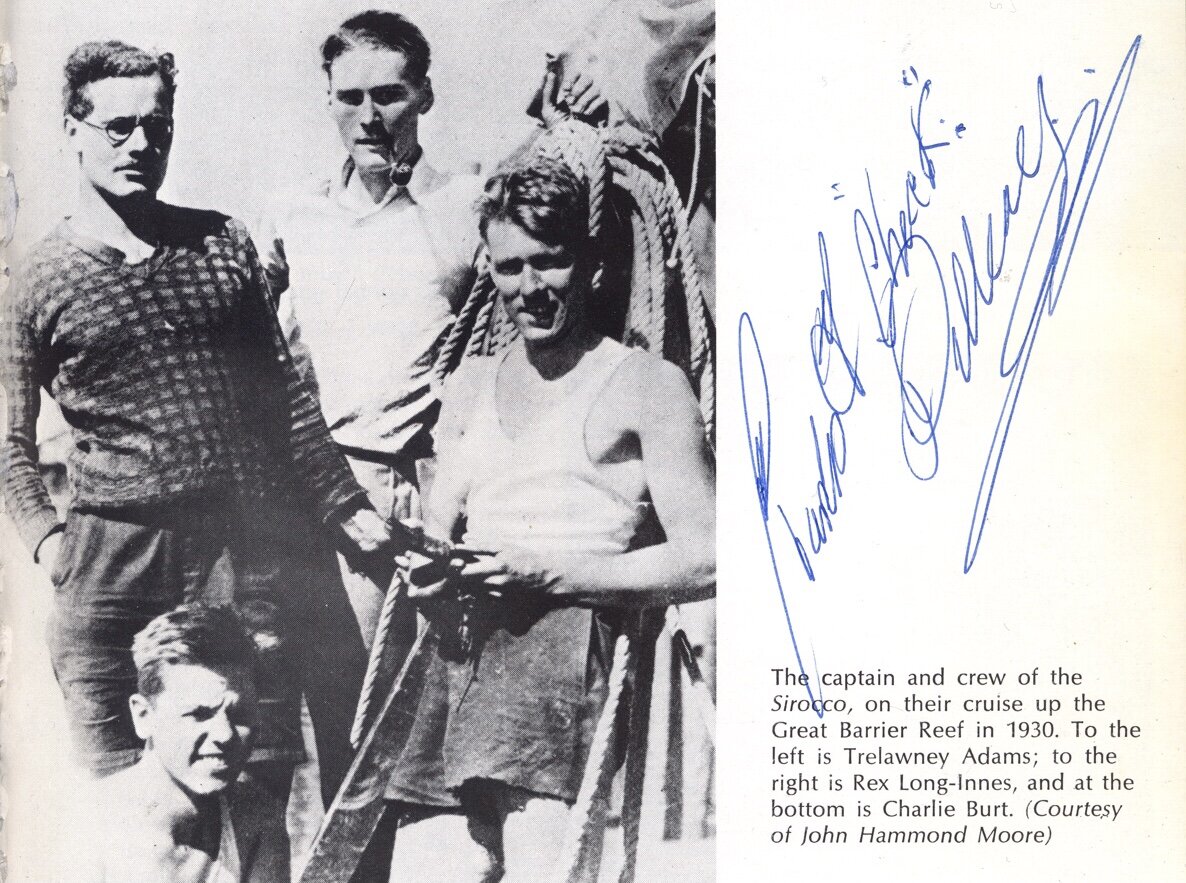
“Beam Ends” published in 1937, was Errol’s account of the 1930 sailing trip from Sydney to New Guinea in the “weather-beaten” SIROCCO. Flynn claimed to have won the boat in a party game while other stories recount stolen jewels being sold to pay for the boat. Robin Hood loved the book but Halvorsen’s, who sold the boat to Flynn took exception to the stories. Their nordic shipwright’s pride may not have understood Hollywood show-biz publicity, when they offered a sincere explanation to the Newcastle Herald in 1937.
THE BOAT THAT ERROL FLYNN BOUGHT
His Story of Sydney Purchase Denied.
“In his book Beam Ends, Errol Flynn the film star, wrote that, while in Sydney he found himself the owner of a yacht, the Sirocco, after a party. Apparently he bought it as a souvenir of the party. He tried to stop the cheque, but it had been cashed. Today Lars Halvorsen & Son. Pty. Ltd. of Neutral Bay, wishes to refute the story of Flynn. Mr. Halvorsen said: 'My father, the late Lars Halvorsen. sold the boat to Mr. Flynn after several days of negotiations. Mr. Flynn was not under any influence when he finally purchased the boat. He made a small deposit in early January 1930 which was not substantiated until January 15, when a settlement was made by Mr. Flynn's mother, who had inspected the boat with Professor Flynn. Mr. Halvorsen added, “the Sirocco, was in perfect condition when sold to Mr. Flynn, and was doing hard service In New Guinea as a trading vessel. She was wrecked but had now been re-floated”.
Harvey Halvorsen, Lars’ grandson adds;
“We did repair work on the yacht for him, but Flynn’s last cheque for about five pounds, bounced. Somewhere in our archive is the returned cheque”
Errol couldn’t care less and sailed on, starring in his most famous role in 1938 “The Adventures of Robin Hood” with Olivia de Havilland and music by the great Erich Korngold. Warner’s swashbuckler, “The Sea Hawk” with Brenda Marshall followed in 1940, using a full size ship, the ALBATROSS floating on Warner’s studio swimming pool.
The Second SIROCCO
The Alden ketch SIROCCO
SIROCCO was purchased by Flynn in 1937. This 74 foot ketch with 2000 square ft of sail was built by George Lawley & Sons of Neponset, Massachusetts. She’s a John Alden (Design #0422) launched as KARENITA in 1929. Flynn, without a permanent home, would often live onboard and race on weekends to Santa Catalina Island some 35Nm south west of Marina Del Rey. He “rounded up the usual suspects”, preferring competition with Humphrey Bogart on his 57 foot yawl SANTANA and Johnny Weissmuller on his 58 foot schooner ALLURE. Weissmuller was a celebrated American Olympic swimmer who played in five Tarzan films in the 1930’s and 40’s, while eventually managing five wives. All three would bet heavily on the outcome. See “Bogie’s One True Love” SWS 13th May.
SIROCCO was interestingly listed as a late entry in the 1972 Sydney to Hobart race. She was described in the Cruising Yacht Club of Australia’s Race Program as “the yacht with the most colourful history in this years fleet. Originally rigged as a ketch, she was at one time owned by film actor Errol Flynn. Her present owner has sailed her from California to New Zealand, where she has just completed a refit. She is now extensively modified and rigged as a cutter”.
SIROCCO’S racing pedigree resulted in a tough handicap of TCF .9409, not much better than the winner AMERICAN EAGLE on .9681. Unfortunately she suffered rig damage early in the race and was last on corrected time. However, the sweet completion for SIROCCO’S Californian crew was bringing her across the finishing line off Battery Point, Errol’s childhood home.
That year AMERICAN EAGLE, helmed by the great Ted Turner III achieved the coveted S2H double, winning both line honours and handicap (AE was a converted 12 metre built to defend the 1964 America’s Cup and trial horse for Australia’s challenger GRETEL II in 1970). Today SIROCCO remains in perfect order. After re-rigging as a ketch she sails again as KARENITA.
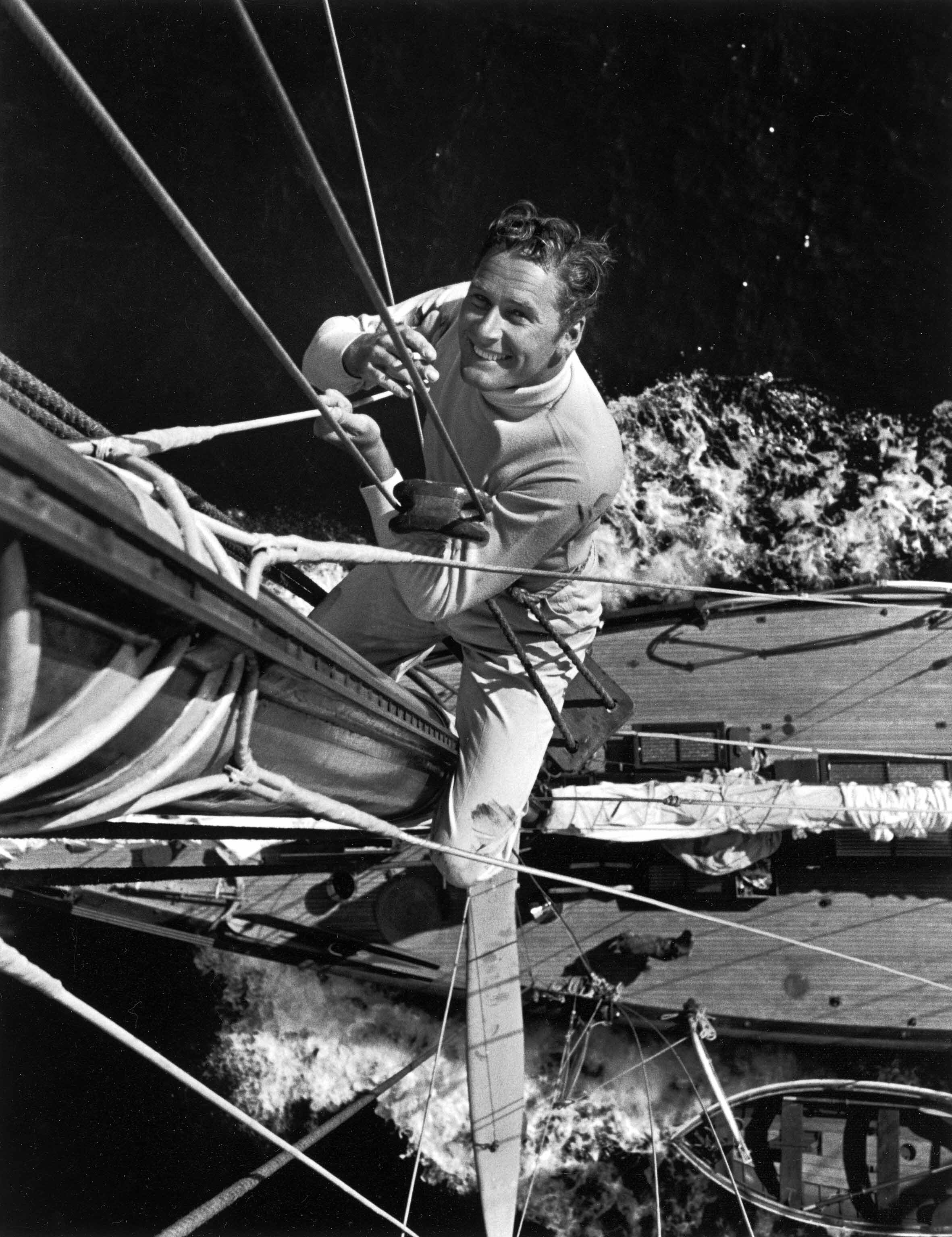
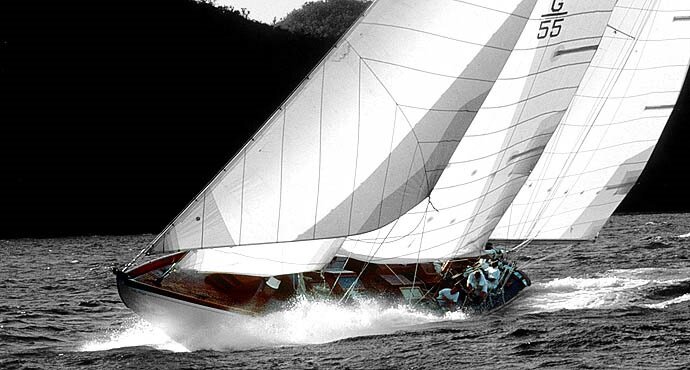
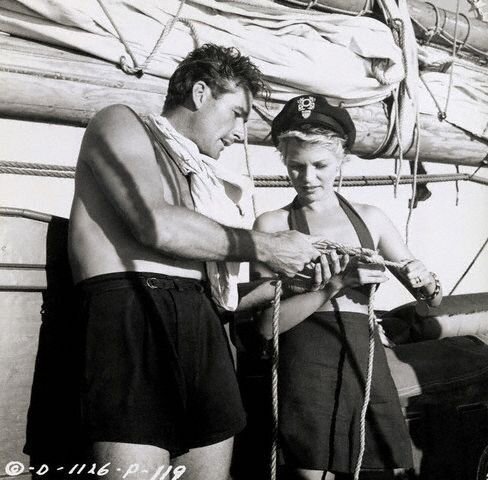

By 1941 Errol had starred in 17 Warner feature films but his marriage to Lili Damita was “on the rocks”. That year, while filming “They Died with Their Boots On” (Flynn as General Custer and Anthony Quinn as Crazy Horse), he finally built himself a home, Mulholland Farm in the Santa Monica hills. The wartime years were busy and profitable as he continued to play-up and play leading romantic men in action films. Errol met his second wife Nora Eddington, who was only 19 during his sensational 1943 trial and acquittal for rape of a minor. Errol was always beset by problems with women and money, so sailing and a strong relationship with his father, sharing their interest in the ocean and marine biology, were constants.
ZACA
ZACA following her Restoration
ZACA in her Navy days in San Francisco
In 1945 Flynn purchased ZACA at a Navy surplus auction for $14,350. She’s a Garland Rotch designed schooner of 118’ with a 23’ beam built by Nunes Bros boatyard in Sausalito in 1929 for the wealthy railroad heir Templeton Crocker. During the height of the Depression the accepted tender price was $350,000 plus $100,000 for fit-out & furnishing with hot & cold running water. She was built and rigged in 10 months. By mid 1930, with a crew of 18 including a doctor and Crocker's valet, the ZACA started across the Pacific on a Round-the-World cruise visiting the Marquesas, Cook Islands, French Polynesia, Tonga, Papua, Timor, Bali and Java where she repaired in Surabaya. They continued north to Singapore, Ceylon and Aden before entering the Suez Canal to the Mediterranean. Finally across the Atlantic to the Caribbean and the Panama Canal before returning to San Francisco.
From 1931 to ’38 with the California Academy of Sciences, Crocker funded and led scientific expeditions from Baja California to the Columbian coast and the Galapagos Islands. On board were academics, deep sea divers, artists and photographers, “conducting preliminary ethnological and natural history surveys of the Pacific Islands”. Crew members tell stories of trips bringing back turtles and iguanas for the live tanks at the San Francisco Aquarium. The war put an end to expeditions and recreational sailing and the US Navy purchased ZACA for a coastal patrol boat, painting the hull, teak deck and interior battleship grey.
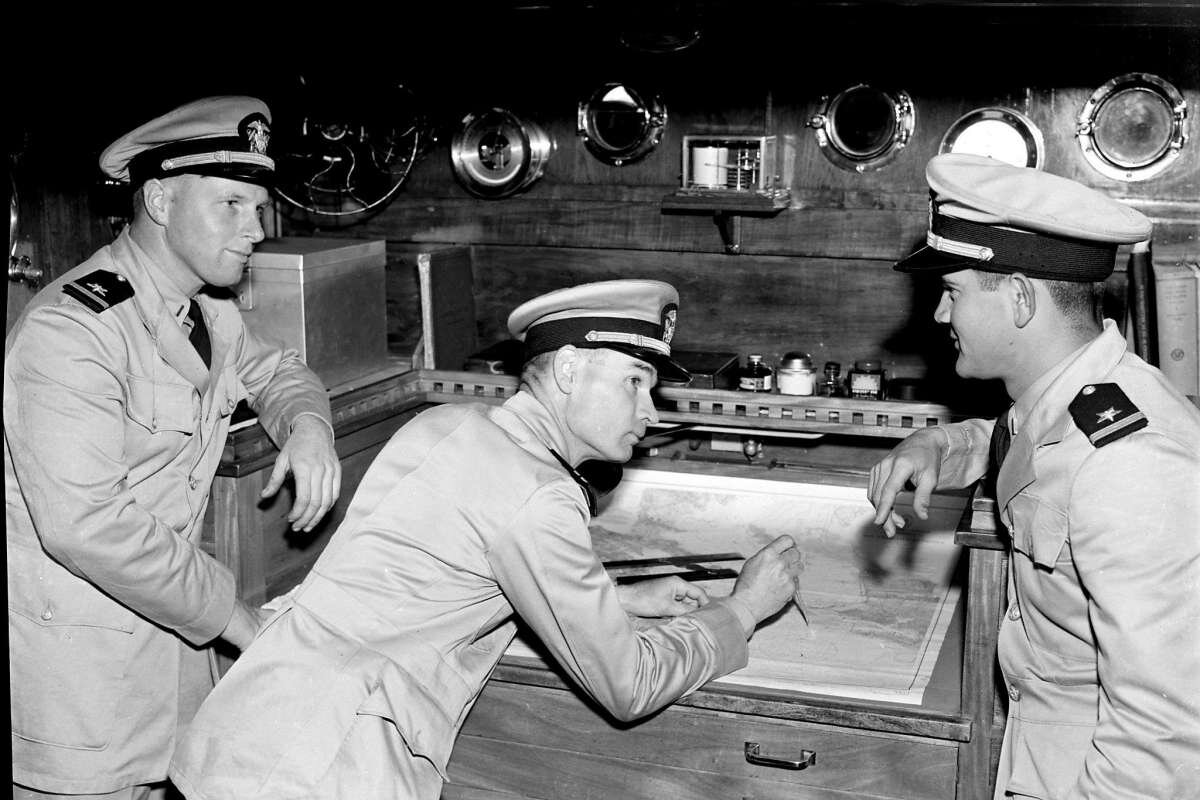
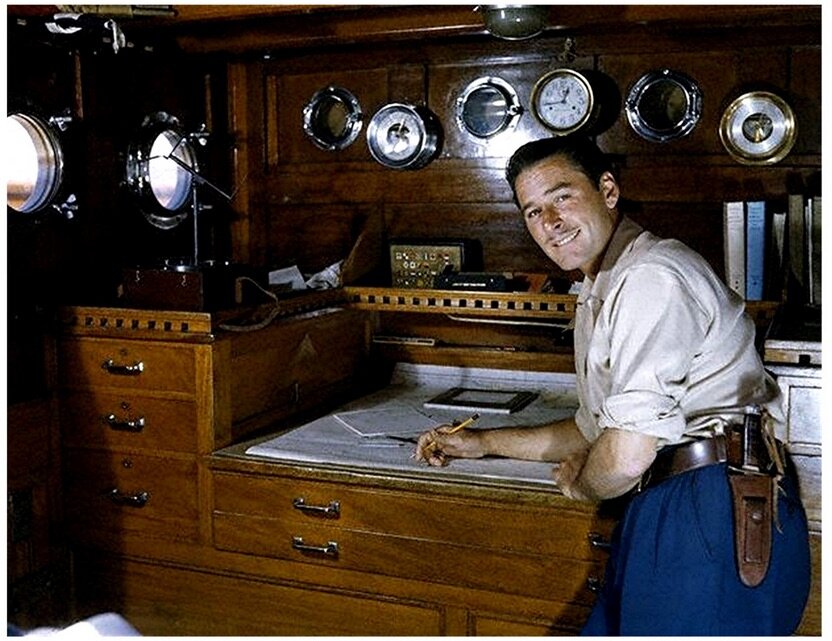
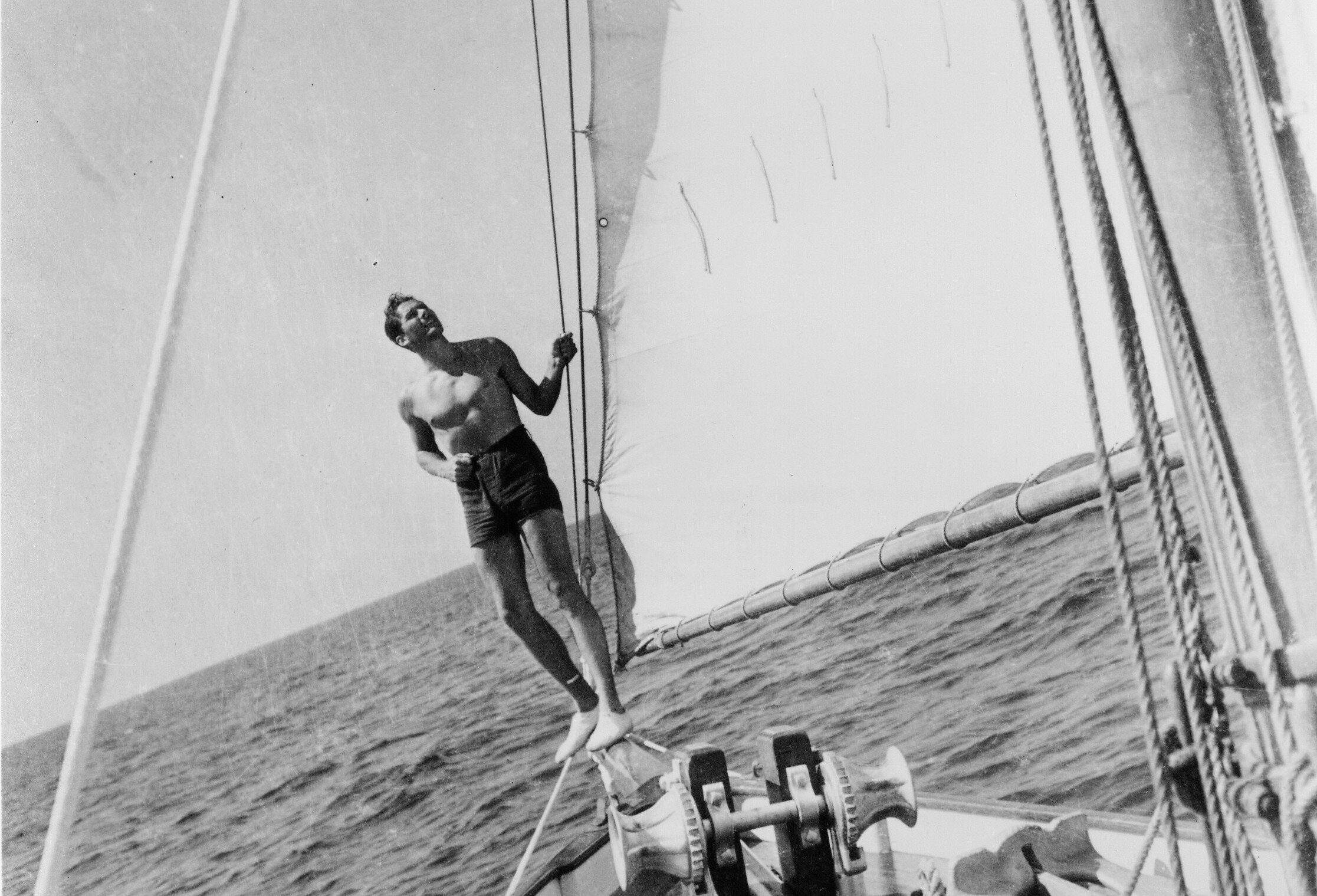
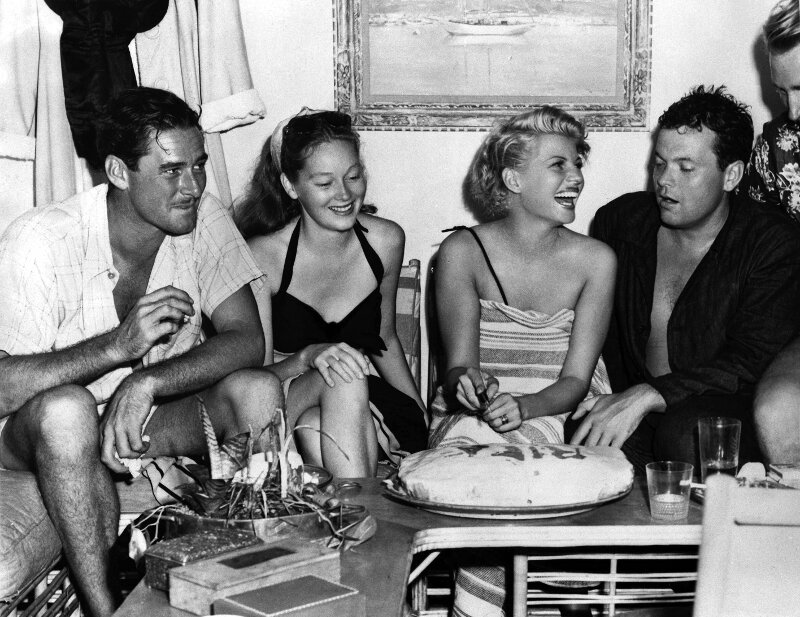

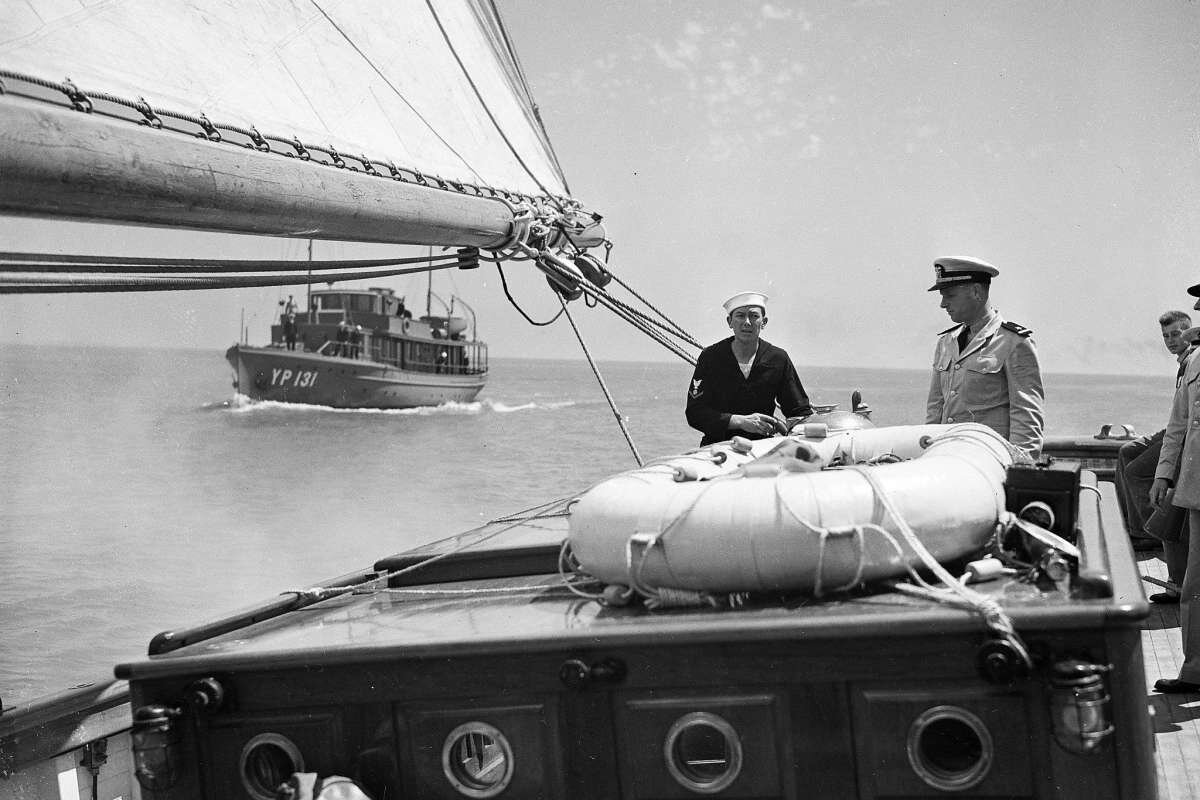
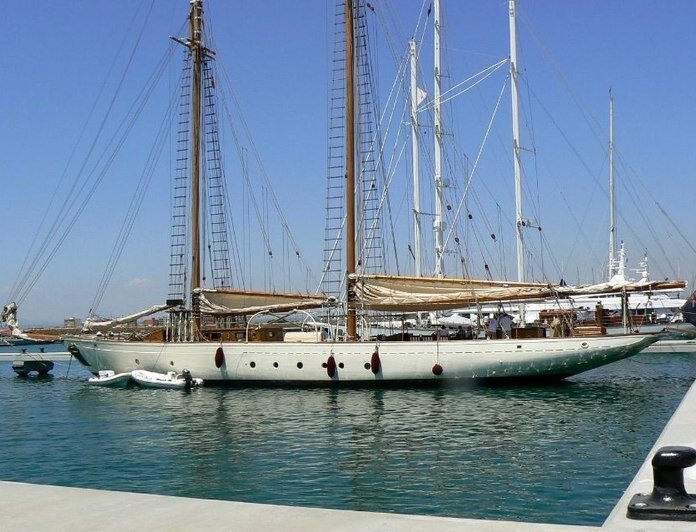
After being de-commissioned by the Navy, Errol spent over $50,000 restoring the brightwork and fitting out a red ermine interior. The post-war adventure started when he contracted the yacht to Orson Welles for his 1946 film “Lady from Shanghai”, starring Welles and his wife Rita Hayworth. Flynn skippered and ran the party during the location shoot in Acapulco. In the following years, inspired by Templeton, Errol outfitted ZACA for marine research expeditions. He set out on several trips along the Californian and Mexican coast, accompanied by his father, Professor Flynn and scientists from the Scripps Institute of Oceanography. See “The Cruise of the Zaca” directed and narrated by Errol Flynn.
By 1949 Errol was divorced again and the film roles started to dry up. He often lived onboard ZACA sailing to Mexico, the Caribbean and eventually the French Riviera. Errol fled to Europe in 1953 owing back taxes while Lili Damita took Mulholland Farm after Errol missed the alimony payments. Flynn made many unreleased films in Europe and in 1954, aged 45, he tried to reprise his fame with “stockings & swords” in an Italian production of “William Tell” that was never completed. In 1957, there was a supporting role in the adaption of Hemingway’s “The Sun also Rises” about bullfighting in Pamploma. The final film role as an American correspondent, was “Cuban Rebel Girls” made in Havana in 1958 and co-starring Errol’s 17 year old girlfriend Beverly Aadland. While in Cuba, still following his journalist’s nose, he chased an interview with Fidel Castro for Hearst Press making contact with Castro the day dictator Fulgencio Batista fled Havana. This became the 1959 documentary narrated by Flynn called “Cuban Story - The Truth about Fidel Castro”.
Sean Flynn the son of Errol and Lili Damita followed his father and did become a photo-journalist. He spent 4 years in Vietnam on assignment often in combat and his photos were well known and widely circulated. In 1970 he was doing high-risk stuff travelling with US Army Special Forces in remote areas. His group were ambushed and captured in Northern Cambodia by Viet Cong guerrillas and never heard of again.
Errol and Lili’s son Sean
With creditors circling his home in Jamaica in 1958, Errol started his autobiography “My Wicked-Wicked Ways” (published posthumously). Going to Vancouver with Aadland the following year to settle the sale of ZACA, he died aged 50. The yacht slowly deteriorated as debtors, heirs and boatyards argued about her fate. She became a mast-less hulk in the harbour of Villefranche-sur-Mer with the interior gutted and the rotten hull kept afloat with pumps. Thankfully she was rescued and fully restored over 10 years in the 1990’s. A short film of her history can be found here
While the two SIROCCOS and ZACA were Flynns most famous yachts he no doubt owned many others. Some say it could have been at least 20 boats. There are 1937 photos of Errol helming the 56 foot yawl CHEERIO II that he renamed THE BACHELOR. Also SAIL BARBARY, a little kauri ketch built in California in 1926 that Flynn “won in (another) 1938 card game” is now sailing on Lake Taupo, New Zealand. SWS would like to hear of any others.
FLYNN COCKTAIL
Things to do onboard. Who’s to say Flynn wouldn’t have approved as he drank pretty much anything put in front of him. The eponymous Errol cocktail is a variation on the White Lady. Dispensing with egg white, you need 3 juicy lemons, 1 lime, Tanqueray gin and Cointreau. No measuring, a stylish shake and pour into a frozen cocktail glass.
FLYNN DOCUMENTARY
SWS recommends the Australian documentary “Tasmanian Devil. The Fast & Furious Life of Errol Flynn”. Flaming Star Films 2006. DVDs available via SWS.
//
By CHARLIE SALTER







